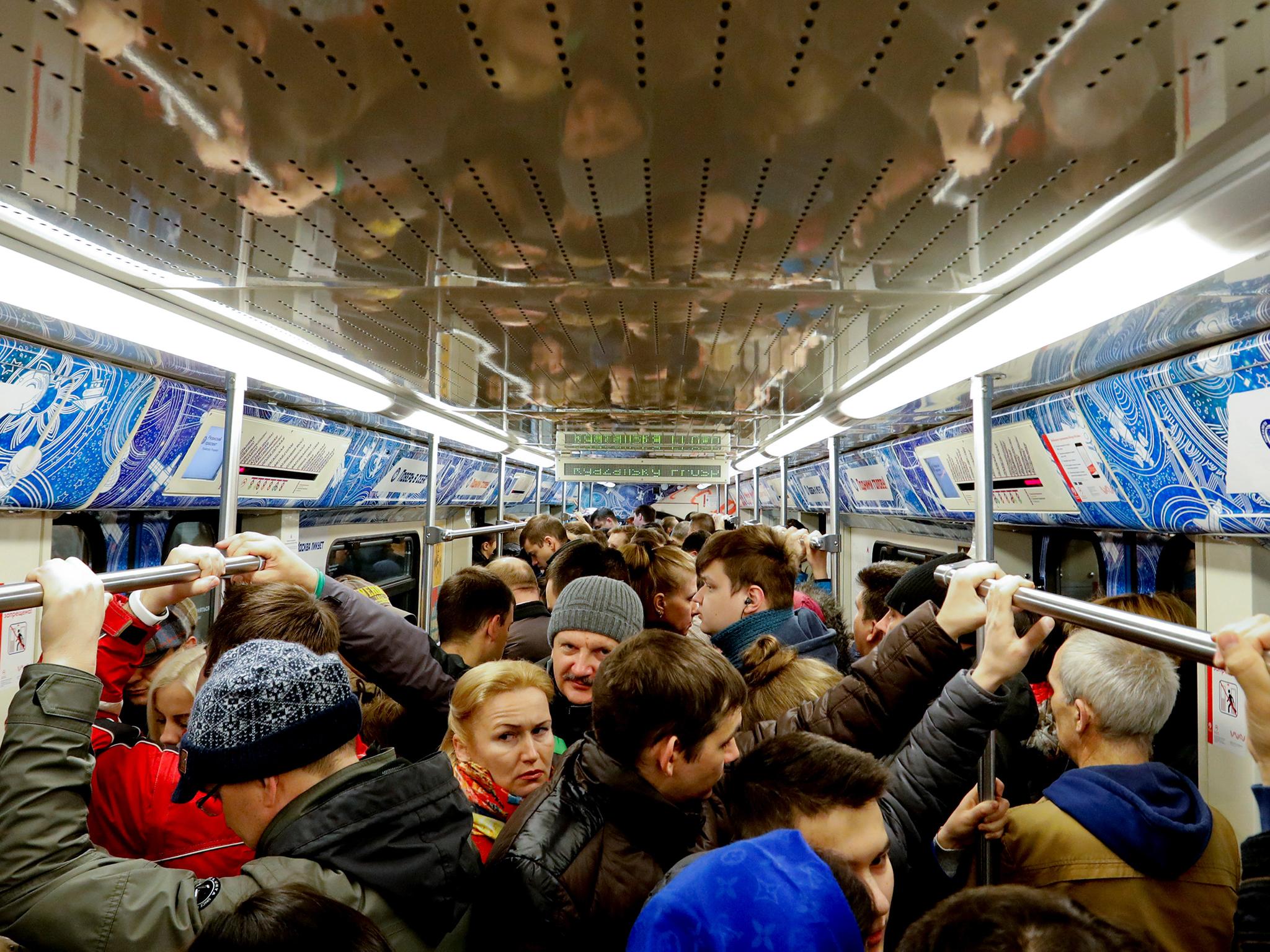Going underground: the Moscow metro
Pride of the Soviets, the metro system boasts 206 stations and carries up to 9 million passengers a day

Rub a dog’s nose for luck. Look back to Russia’s 1917 Bolshevik revolution. Marvel at a mosaic spaceman. Maybe even watch a ballet. Moscow’s metro is one of the busiest and most visually stunning underground systems in the world. It is a tourist site in its own right.
Created as a showcase for the Soviet Union, its elaborate, spacious stations are adorned with mosaics, marble statues and stained glass that tell the story of the Communist state.
When it opened in 1935, the metro had just 11 stations and attracted 285,000 curious riders on the first day. Today there are 206 stations and up to nine million passengers a day.
The Moscow metro’s immaculate stations are a mix of old and new. Get off at Ploshchad Revolutsii (Revolution Square) and you will see passengers going up to a statue of a border guard and rubbing his dog’s nose for luck. There are four such statues in the station, and all the dogs have shiny noses from the constant rubbing.
The metro was originally named after Lenin, and the Bolshevik leader’s image was and still is found in stations throughout the metro: in statues, mosaics and a giant bust of Lenin on the wall in Ploshchad Ilyich (Ilyich Square) metro station.
The image of his successor Josef Stalin was also seen on the metro until Soviet leader Nikita Khrushchev denounced him in 1956, prompting the dismantling of statues of him all over the Soviet Union. At Dobryninskaya metro station, a mosaic shows a happy crowd holding up a photo of a cosmonaut. The photo previously depicted Stalin and the cosmonaut was parachuted in to hide the disgraced leader.
A statue of Stalin was removed from Kurskaya metro station in central Moscow but a quote from the Soviet national anthem. “Stalin reared us on loyalty to the people / He inspired us to labour and heroism” was controversially restored to the metro’s entrance in 2009.
At Kievskaya, a station built in 1954 when Ukraine was part of the Soviet Union, a vivid mosaic dedicated to Russian-Ukrainian ties occupies one wall. The two countries are now far from close, as underlined by Russia's annexation of Crimea in 2014.
The metro has been expanding fast in the past few years, and modernising with one eye on the World Cup that Russia will host in 2018.
It now has free wifi and announcements in English are gradually being introduced across the numerous lines. In the more tourist-friendly stations, “selfie spots” have been designated on the floor to help passengers get the best photo with a metro architectural highlight in view.
A ballet version of Dostoyevsky’s The Idiot was recently performed in the metro station named after the author.
Another visible change is the controversial replacement of many of the elderly women who used to sit in a booth at the bottom of the seemingly endless escalators. They were famous for telling passengers off if they sat down on the escalator steps.
One attendant known by locals as Auntie Lyuda was famous for telling jokes on Mondays, reading poems and telling passengers to imagine they were in England – if passengers want to walk up and down the steps of the escalator, they should do so on the left. Now the attendants are mainly young men, and have yet to show any skill in bantering with passengers.
Moscow finally seems to have realised how iconic its metro is and has introduced tourist stands with metro-related gifts. The souvenirs include an 8cm model of the guard and the dog (rub the nose at home to your heart’s content for 2,900 roubles or £40) or coasters with famous metro mosaics on them, including one of Lenin.
Reuters
Join our commenting forum
Join thought-provoking conversations, follow other Independent readers and see their replies
Comments